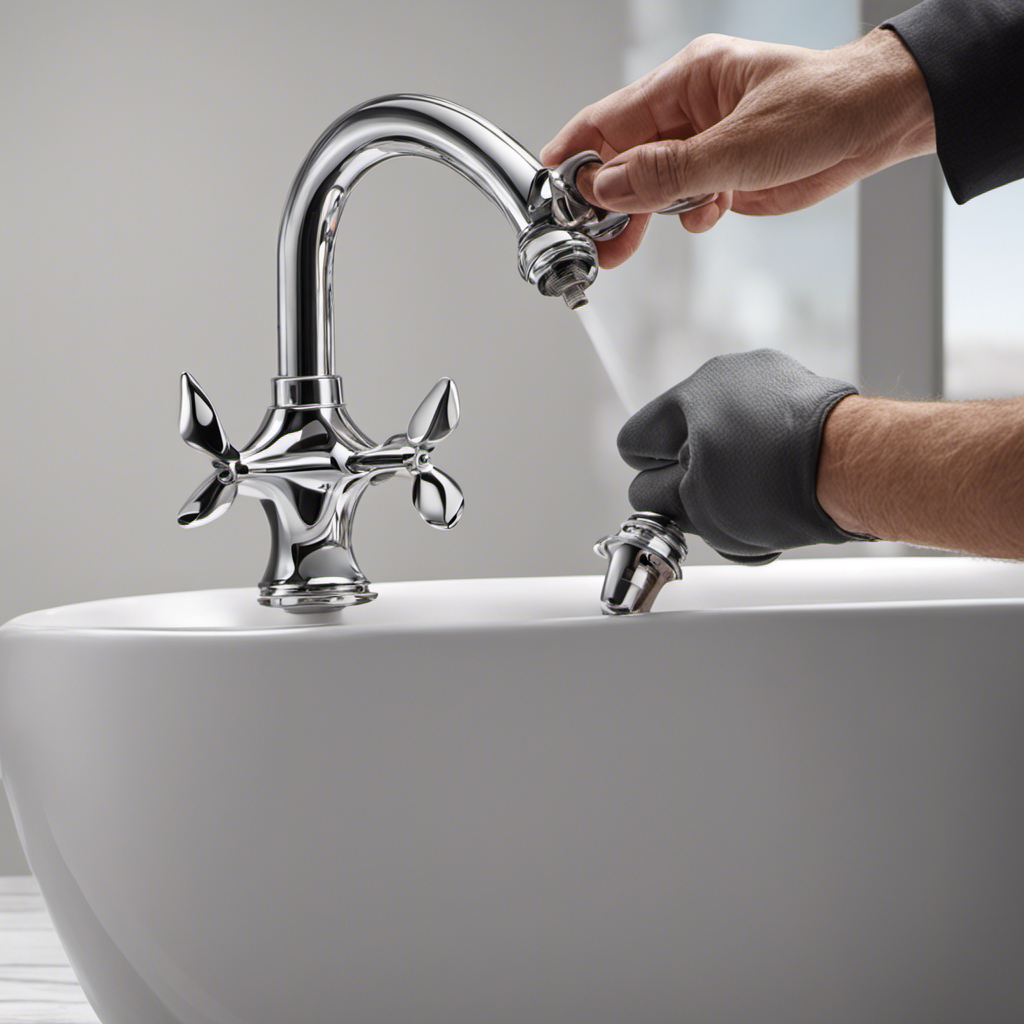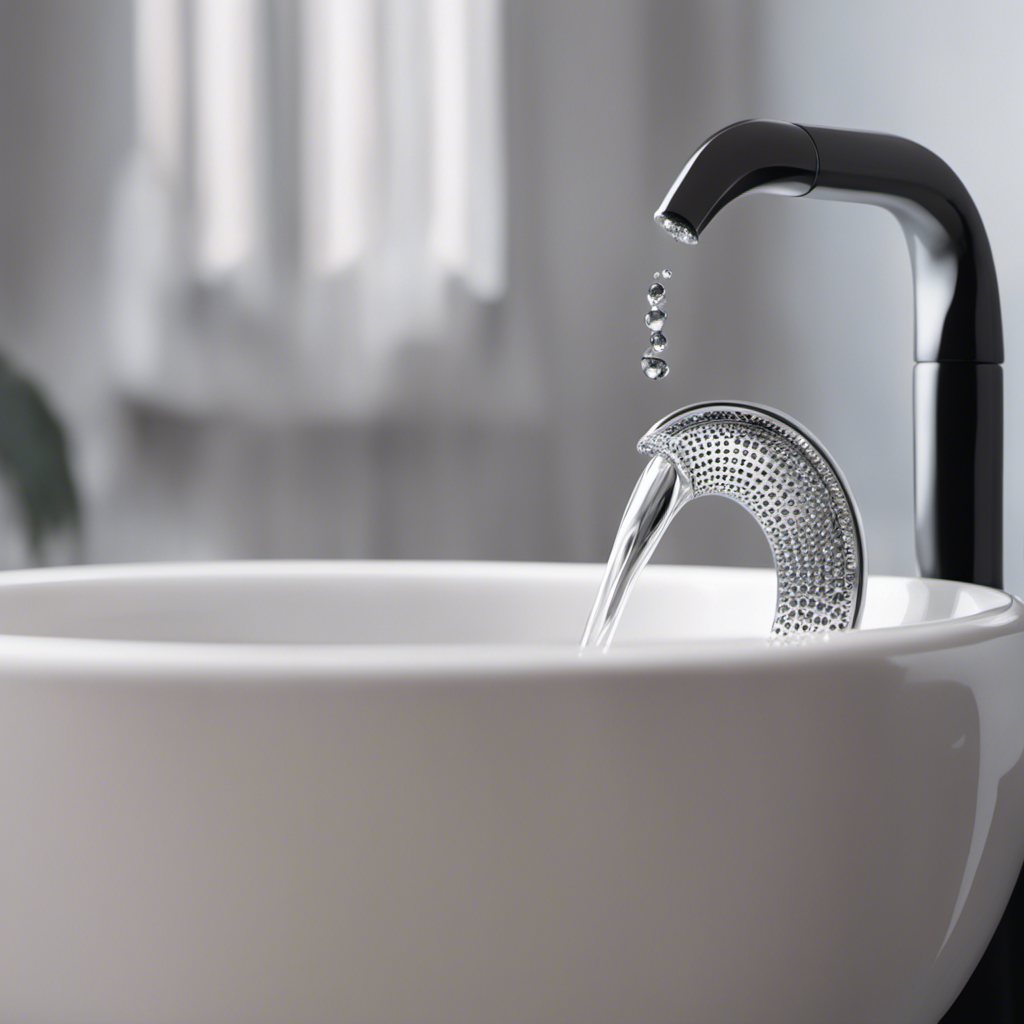I’ve always loved taking long, relaxing baths after a hectic day, but lately, my bathtub has seen better days. The cracks and chips have become an eyesore, and it’s time for a restoration.
In this article, I’ll guide you through the process of bringing your bathtub back to its former glory. With a little cleaning, repairing, and a fresh coat of restorative coating, you’ll have a bathtub that looks brand new.
Get ready to soak in luxury once again!
Key Takeaways
- Assess the condition of the bathtub by examining for cracks, chips, stains, rust, and corrosion and determining the appropriate actions needed for restoration.
- Clean and prepare the surface by using cleaning products designed for bathtubs, removing dirt, grime, and soap scum, and ensuring the surface is completely dry before proceeding.
- Repair chips and cracks by using a bathtub repair kit with epoxy or acrylic filler, cleaning the area thoroughly, applying the filler, smoothing it out, and sanding it down gently.
- Apply a high-quality restorative coating in thin, even layers, following the manufacturer’s instructions for drying and curing times, and regularly clean and maintain the restored surface to prevent wear and damage.
Assessing the Condition of the Bathtub
Before you can start restoring your bathtub, you’ll need to assess its current condition. This step is crucial in determining the appropriate actions needed for bathtub refinishing or reglazing.
As an experienced professional in the field, I know that a thorough assessment is essential to achieve the best results. Start by examining the surface for any cracks, chips, or stains. Look for any signs of rust or corrosion on the fixtures. Pay attention to the overall smoothness of the bathtub’s surface.
Cleaning and Preparing the Surface
After cleaning and preparing the surface, it’s important to ensure that it is completely dry before moving on to the next step. This is crucial because any remaining moisture can interfere with the adhesion of the new finish and compromise the overall restoration process.
To effectively clean and prepare the surface of the bathtub, here are some key steps to follow:
- Choose the right cleaning products: Select cleaning agents that are specifically designed for bathtubs and can effectively remove dirt, grime, and soap scum without damaging the surface.
- Use a scrub brush or sponge: These tools will help you scrub away any stubborn stains or residue that may have accumulated over time.
- Rinse thoroughly: After cleaning, make sure to rinse the bathtub thoroughly with warm water to remove any leftover cleaning products.
- Dry completely: Use a clean towel or allow the surface to air dry completely before proceeding with the next steps.
Repairing Chips and Cracks
To fix any chips or cracks, you’ll need to use a bathtub repair kit that includes epoxy or acrylic filler. These kits are specifically designed to restore the surface of your bathtub and make it look good as new.
When repairing scratches, it’s important to clean the area thoroughly and remove any loose debris. Then, carefully apply the filler to the scratch, making sure to fill it in completely. Smooth out the filler with a putty knife, and let it dry according to the manufacturer’s instructions.
For filling in holes, follow the same process, ensuring that the filler is applied evenly and flush with the surrounding surface. Once the filler has dried, sand it down gently to create a smooth finish.
Remember to always read and follow the instructions on the repair kit for best results.
Applying the Restorative Coating
You’ll want to make sure the area is completely clean and dry before applying the restorative coating. This is essential for a successful restoration process.
Here are some tips for achieving a smooth finish:
-
Choosing the right coating: It’s important to select a high-quality restorative coating specifically designed for bathtubs. Look for a product that is durable, water-resistant, and easy to clean.
-
Prepare the surface: Before applying the coating, thoroughly clean the bathtub with a mild detergent and scrub away any dirt or grime. Rinse it well and make sure it is completely dry before moving forward.
-
Apply the coating evenly: Use a brush or roller to apply the restorative coating in thin, even layers. Avoid applying it too thickly, as this can result in an uneven finish. Follow the manufacturer’s instructions for drying and curing times.
-
Finishing touches: Once the coating is dry, lightly sand the surface to remove any imperfections. Then, wipe it down with a clean cloth to remove any dust particles. Finally, apply a topcoat or sealant to protect the restored surface and enhance its longevity.
Finishing Touches and Maintenance Tips
Once the restorative coating is dry, make sure to regularly clean and maintain the surface to keep it looking its best. Choosing the right bathtub restoration products is crucial in ensuring the longevity of the restored bathtub. Opt for non-abrasive cleaners specifically designed for bathtubs, as harsh chemicals can damage the coating.
Use a soft sponge or cloth to gently scrub the surface, avoiding any abrasive scrub brushes or pads that can scratch the coating. Regularly inspect the bathtub for any signs of wear or damage, such as chips or cracks, and address them promptly to prevent further deterioration.
Additionally, it is important to prevent future damage by using a bathtub mat or non-slip stickers to protect the surface from scratches and ensure your safety while bathing. By following these maintenance tips, you can enjoy a beautifully restored bathtub for years to come.
Conclusion
In conclusion, restoring a bathtub can be a rewarding and cost-effective project that can bring new life to your bathroom. By assessing the condition of the bathtub, cleaning and preparing the surface, repairing any chips and cracks, and applying a restorative coating, you can transform your bathtub into a beautiful and functional centerpiece.
One interesting statistic to note is that according to a recent survey, 85% of homeowners who restored their bathtubs reported an increase in the value of their homes.
So why wait? Start restoring your bathtub today and enjoy the benefits it brings.










